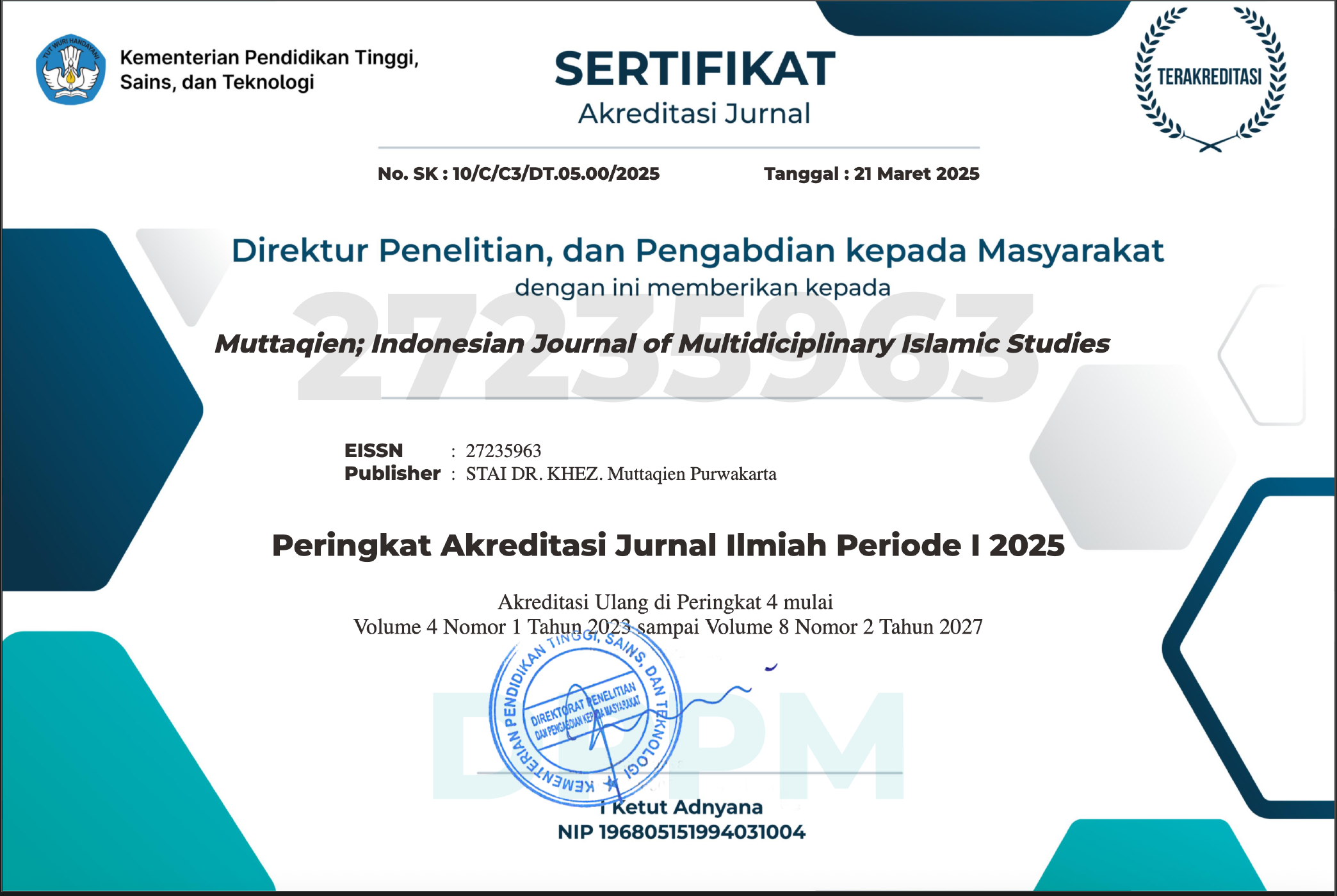VISITORS
Peer Review Process
-
Submission of Paper: The author submits the paper and supplementary file, such as plagiarism check results or other data (if needed), online through the Open Journal System (OJS): https://e-jurnal.staimuttaqien.ac.id/index.php/mtq/login.
-
Editorial Office Assessment: The Muttaqien first assesses the submitted paper; Indonesian Journal of Multidiciplinary Islamic Studies. The editor checks whether it suits the Journal's focus and scope. The paper's composition and arrangement are evaluated against the journal's Author Guidelines to ensure it includes the required sections and stylizations. In addition, an assessment of the minimum required quality of the paper for publication begins at this step, including one that assesses whether there is a major methodological flaw. Every submitted paper which passes this step will be checked by the Turnitin application to identify any plagiarism before being reviewed by reviewers (if the author has not sent supporting files in the form of plagiarism checks).
-
Appraisal by the Editor-in-Chief: The Editor-in-Chief determines if the paper is appropriate, original, engaging, and significant for publication. If not, the paper may be rejected at this stage.
-
Invitation to Reviewers: The managing editor sends invitations to individuals he or she believes would be an appropriate reviewer (also known as referees) based on expertise, the closeness of research interest, and no conflict of interest consideration. The peer-review process at Muttaqien; Indonesian Journal of Multidiciplinary Islamic Studies involves a community of experts in a narrowly defined field of multidisciplinary Islamic studies in the Indonesian context, focusing on advancing Islamic scholarship and society who are qualified and able to perform reasonably impartial reviews. The impartiality is also maintained by the double-blind peer review employed in this journal. That said, the reviewer does not know the author's identity, conversely, the author does not know the reviewer's identity, because the paper is sent to reviewers anonymously.
-
Response to Invitations: Potential reviewers consider the invitation against their expertise, conflicts of interest, and availability. They then decide to accept or decline. In the invitation letter, the editor may ask the potential reviewer for a suggestion of an alternative reviewer when they decline to review.
-
Review is Conducted: The reviewers allocate time to read the paper several times. The first read is used to form an initial impression of the work. If major problems are found at this stage, the reviewers may feel comfortable rejecting the paper without further work. Otherwise, they will read the paper several times, taking notes to build a detailed point-by-point review. The review is then submitted to the journal, with a recommendation to accept or reject it, or with a revision request (usually flagged as either major or minor) before reconsidering. Journal Evaluates the Reviews: The Editor-in-Chief and handling editor consider all the reviews, and if there are differing opinions, additional reviewers may be invited for an extra opinion.
-
Journal Evaluates the Reviews: The Editor-in-Chief and handling editor consider all the returned reviews before making an overall decision. If the reviews differ widely between both reviewers, the handling editor may invite an additional reviewer to obtain an extra opinion before deciding.
-
The Decision is Communicated: The editor sends a decision email to the author, including any relevant reviewer comments. Reviewer comments are anonymously sent to the corresponding author to take the necessary actions and responses. At this point, reviewers are also sent an email or letter letting them know the outcome of their review.
-
Final Steps: If accepted, the paper will be sent for copy-editing. Suppose the article is rejected or returned to the author for major or minor revision. In that case, the handling editor will include constructive reviewer comments to help the author improve the article. The author should make corrections and revise the paper per the reviewers' comments and instructions. Peer review assists the editor in making editorial decisions and helps authors improve their papers through feedback and suggestions.
After revision, the author should resubmit the revised paper to the editor.
If the paper was returned for revision, the reviewers should expect to receive the revised version, unless they have opted out of further participation. However, the handling editor might do a follow-up review where only minor changes were requested.
If the editor is happy with the revised paper, it is accepted. The accepted papers will be published online and are freely available as downloadable pdf files.









